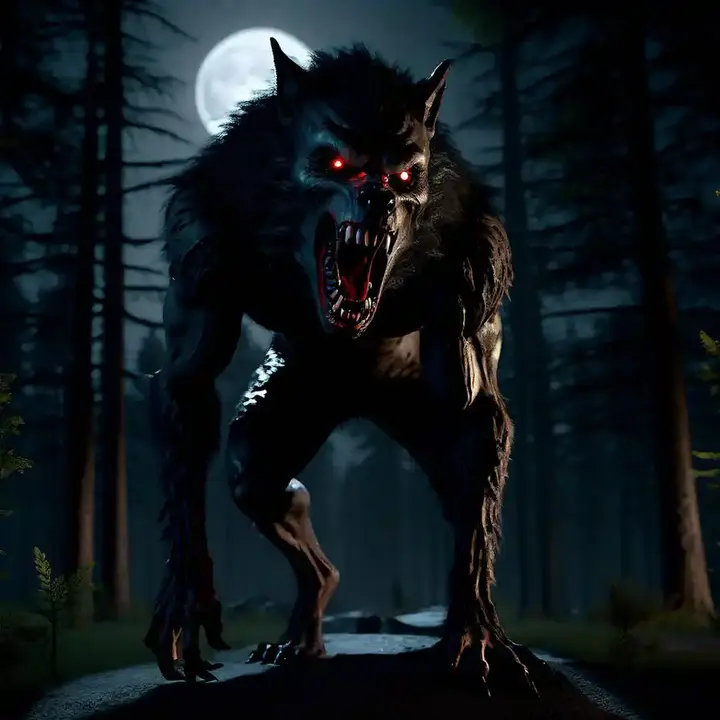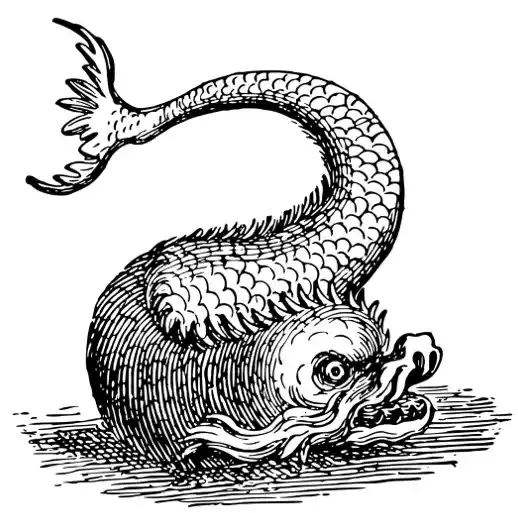Three Arab legends you've never heard of before
Many of us have grown up on famous legends such as "Sinbad", "Ali Baba and the Forty Thieves", "Aladdin and the Magic Lamp" and other legends, but we rarely hear about legends like the one we will tell here. Certainly, they are three Arab legends that you have never heard of, hidden like treasures waiting to be discovered. So let's get to know them.
Show key points
- The legend of the Nisnas describes a terrifying half-human, half-monster creature that hops on one leg and is known to attack and kill humans.
- Ancient historians and writers, including Herodotus and Pliny the Elder, described beings resembling the Nisnas, suggesting the myth had roots in both Arab and Western traditions.
- Arab mythology sometimes links the Nisnas to a demon-human hybrid called "crack," believed to be created through interbreeding.
- ADVERTISEMENT
- The tar monster is a pre-Islamic Arab myth about a wolf-like demon that lives in graveyards and consumes the bodies of the dead.
- This tar monster myth might stem from misunderstood medical conditions like lycanthropy and porphyria, which caused people to believe they were turning into wolves.
- Bahmut, a colossal fish in Arab legends, was believed to carry the Earth on its back and appears in various religious and mythological tales.
- The encounter between Prophet Jesus and the Bahmut, as described in mythology, underscores the creature's immense size and mythical significance.
The legendary monkey monster

At first glance, when you read the name, you think that it is the Nisnas that we know, which is a type of monkey, but the Nisnas that we are talking about is one of the Arab myths that tells about a frightening creature with half a head and half a body and jumps huge jumps with one foot and pounces on humans and kills them, and it has been mentioned in many ancient stories, the most famous of which is One Thousand and One Nights.
Recommend
An Iraqi historian narrates in his book "The detailed history of the Arabs before Islam" about the people named "Wabar" that they "were born Nisnas bin Umaym bin Amaliq bin Yalmaa bin Laudh bin Sam, they were originally human beings, so God made them a woman, the man of them has half a head and half a face, and one eye and one hand and one leg, and they became grazing as animals graze, and jumping heavily and are considered a denial enemy."
It was described by the Greek writer Herodotus in the fifth century BC and said: "There was a tribe of men without heads, and instead, their eyes and mouths were on their chests." He was not the only one to describe the tribe with such a strange description, for more than four centuries later the Roman writer Pliny the Elder insisted that these creatures existed and were real.
Language books classify Nisnas from myths, and it is stated in the dictionary "Crown of the Bride": "Nisnas... In the hadith: "Whoever disobeys their Messenger is alive and Allah has deformed them as a woman, each of them has a hand and a man of one slit who jump like a bird and graze as cattle graze, and it is found in the islands of the China Sea."
In addition, in pre-Islamic Arab mythology, it was stated that the breed is the product of interbreeding between a type of demon called "crack" with humans, and has the ability to kill humans. He also described the famous Muslim scholar Al-Qazwini as "Al-Shaq" in his book, saying: "He is a demonstrator, his image is a half-human image, and they claim that the nisnas are composed of the crack and the human being, and appear to man in his travels.
2- The legend of the tar monster

This myth is one of the popular superstitions that appeared among the Arabs before Islam. It is said to be a wolf-like monster, belonging to a type of demon or jinn, living in cemeteries and feeding on the corpses of the dead. It also resembles a mythical ghoul creature, and Edward Lane, the English translator of One Thousand and One Nights, says that the male ghoul is called a dropper. It is also said that he was a normal human being and the reason for his transformation into a polar monster is a disease resulting from a sunken bite from a rabid wolf, which made him live in isolation and when night falls and the moon is full, he begins to turn and his body hair is covered and his fangs appear so that he can practice his favorite habits such as cannibalism.
The name of the cat is given in Arabic to a rare psychological syndrome called "lycanthropy", in which the patient fancies that he is physically turning into a wolf. The Muslim physician Abu Bakr Muhammad al-Razi described it in the early tenth century, as a brain disorder or psychosis rather than a physical transformation, and al-Razi saw this as a kind of madness, forcing a person to behave like a wolf.
It is also interesting that it was most likely believed to be a disease, as Arab scholars, including "Ibn Sina" and "Al-Zahrawi", talked about it, as one of his patients complained of dense hair and fear of light, and they called it "Al-Qatrab" at the time. It is also a symptom of a disease with a scientific explanation and treatment. It is called the wolf man disease and its scientific name is "porphyria", and it is an imbalance of iron representation in the body, but in rare cases the nails are long, the fangs protrude, the eyes redden, the skin wrinkles, and the person cannot tolerate sunlight, he is a human wolf.
The legendary creature Bahmut

The Bahmut is a mythical creature that appeared in Arab mythology in the pre-Islamic era. It was known to be a giant fish inhabiting the depths of the oceans, and the ancient Arabs thought that the Bahmut was carrying the land on its back. On the night 496 of the tales of "One Thousand and One Nights" appeared in the form of a whale that God created a great sea, underneath and a light and a rock above it, as well as a king of angels carrying the seven lands on his shoulders.
It is also reported that Allah informed the Prophet Jesus of it, so Jesus asked Allah to show it to him, so Allah commanded a king of angels to take Jesus to see him, and when the king took him to the sea where the whale was, the whale passed by him like lightning, and fainted on him. When Jesus woke up, God inspired him and said, "Jesus, have you seen the whale? And did you know its length and width? Jesus said, "O Lord, your glory and majesty have not been seen, but a great light of three days passed over me, and I did not know what that light was about.








